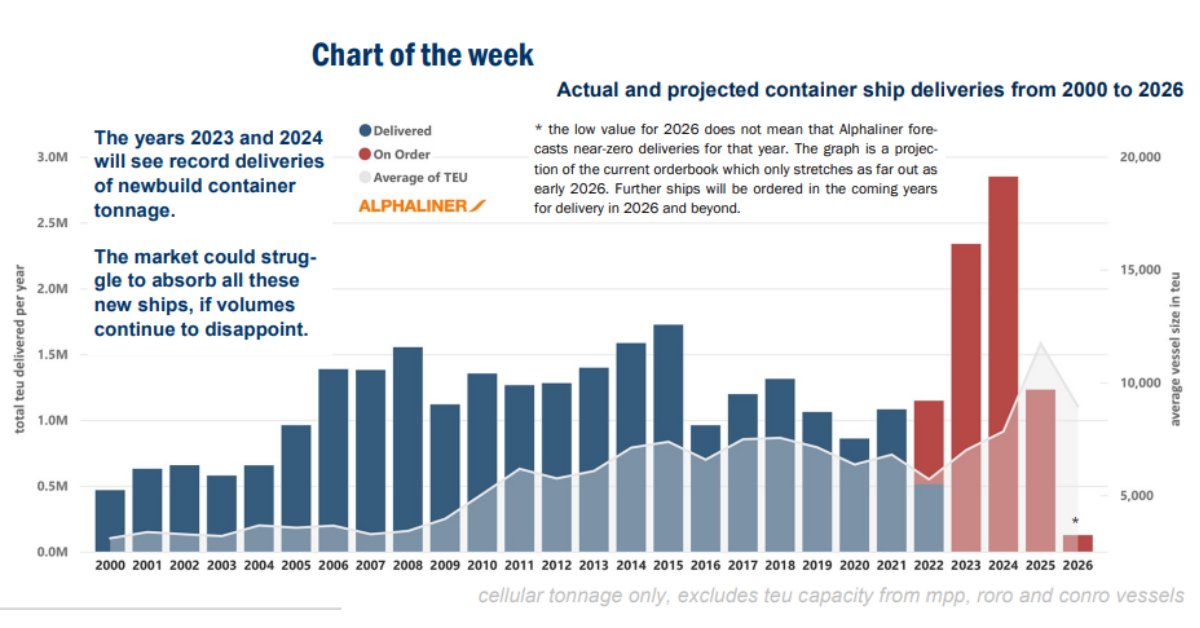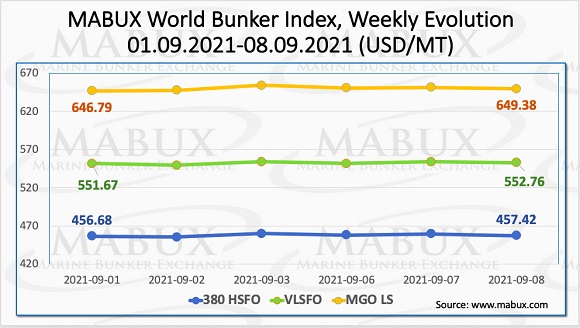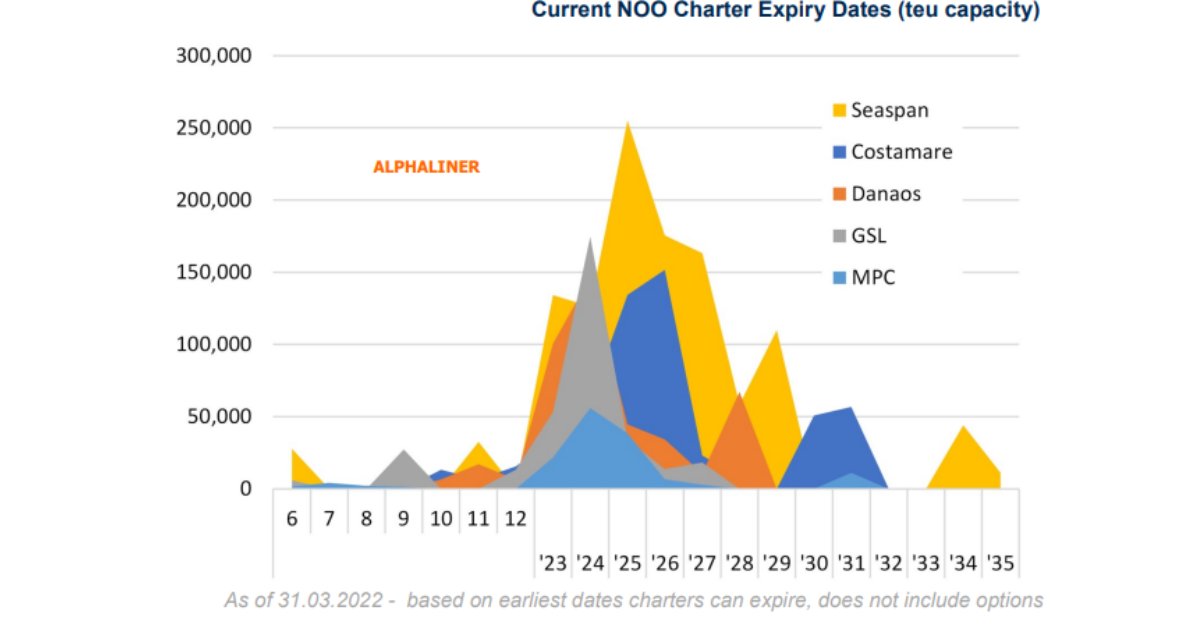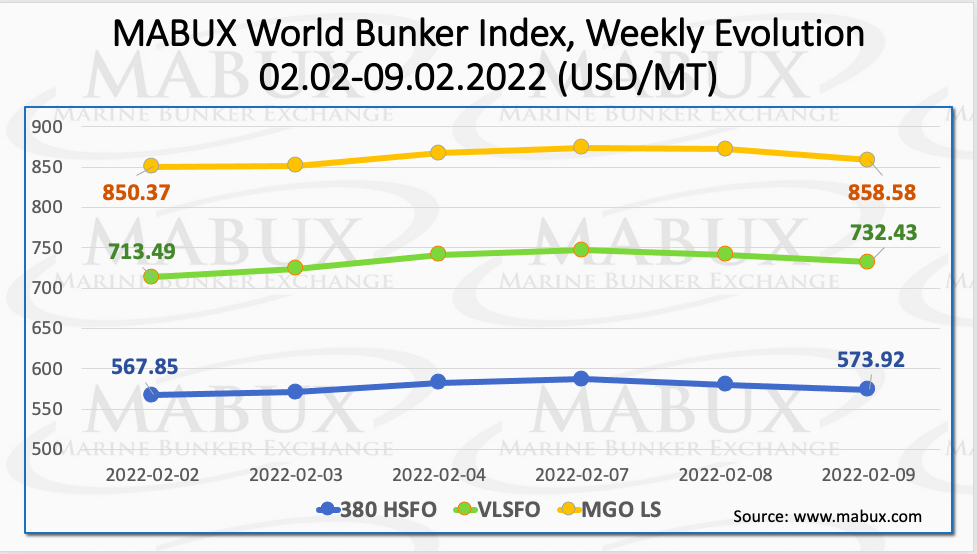
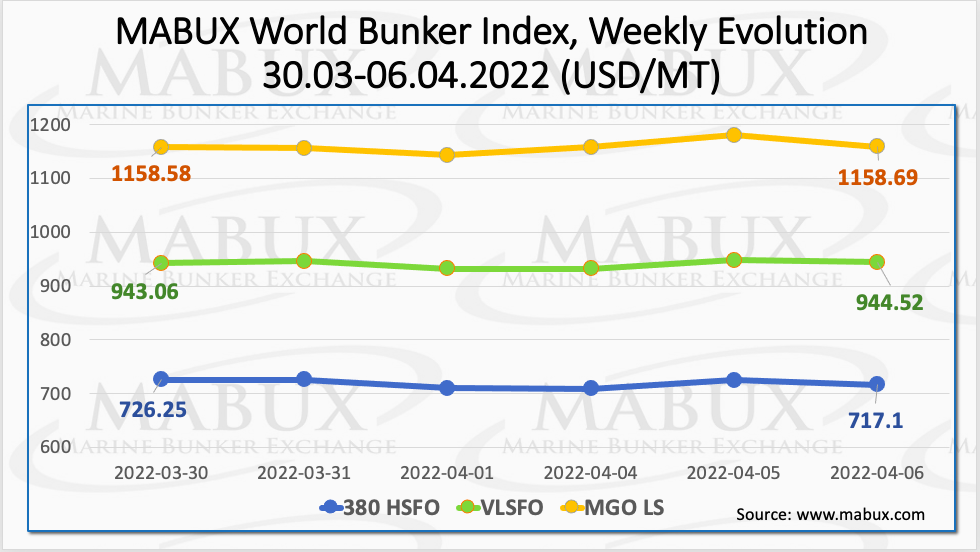
There is still no firm trend in the global bunker market amid the ongoing military conflict in Ukraine. Over the Week 14, the MABUX Bunker Index showed slight irregular changes. The 380 HSFO index fell by 9.15 USD: from 726.25 USD/MT to 717.10 USD/MT. The VLSFO index rose by 1.46 USD: from 943.06 USD/MT to 944.52 USD/MT. The MGO index added a symbolic 0.11 USD (from 1158.58 USD/MT to 1158.69 USD/MT)..

The Global Scrubber Spread (SS) weekly average – the difference between 380 HSFO and VLSFO – remained almost unchanged over the week, showing an increase of $ 0.67 ($ 222.13 vs. $ 221.46 last week). In Rotterdam, the average SS Spread dropped from $209.33 to $207.67 (down $1.66 from last week). However, the most significant decline was recorded in Singapore: minus $29.67 from $209.67 to $180.00. SS Spread in this port continues plunging for the second week in a row, reaching $ 160 on April 06 (versus $ 223 on March 24). More information is available in the Price Differences section of mabux.com.

Over the Week 14, the average correlation of MABUX MBP Index (market bunker prices) vs MABUX DBP Index (MABUX digital bunker benchmark) showed that the fuel overpricing trend prevailed in the global bunker market amid high volatility. Thus, 380 HSFO fuel remained overvalued in all four selected ports, while overcharge ratio increased significantly: in Rotterdam – plus $ 63 (plus $ 27 last week), in Singapore – plus $ 48 (plus $ 2), in Fujairah – plus $51 (plus $3) and in Houston – plus $68 (no change). The most significant was overprice growth in Fujairah by 48 points.
VLSFO fuel grade, according to the MABUX MBP/DBP Index, also remained overpriced on average in all selected ports: plus $101 (plus $50) in Rotterdam, plus $42 (plus $8) in Singapore, plus $68 (plus $40) in Fujairah and plus $106 (plus $81) in Houston. In all selected ports, there is a firm trend towards a significant rise in the VLSFO’s overprice ratio.
As for MGO LS, MABUX MBP/DBP Index registered an underpricing of this fuel grade only in one out of four ports selected: Singapore – minus $8 (minus $88). All other three ports demonstrated an overcharge: Rotterdam – plus $24 (minus $6), Fujairah – plus $87 (plus $25) and Houston – plus $107 (plus $46). In this fuel segment, there is registered a change in trend and a gradual transition to the overprice zone.

The Getting to Zero Coalition highlights an increase in the number of projects since its second mapping report last March – up from 106 to 203 – with a focus on ship technologies, fuel production, bunkering and infrastructure. Some key takeaways from this year’s report include more focus on hydrogen-derived fuels, more large vessels targeting ammonia and methanol, an increase in bunkering and infrastructure projects, and the emergence of fuel production in Oceania. The report also highlights an increase in the number of hydrogen – including green hydrogen – and ammonia production projects since 2021 (42 of the fuel production projects are involving so-called “Green Hydrogen” based on electrolysis). Some 114 projects in the report have a connection to Europe. However, the new report also identifies 60 Asian projects, up from 31 in the second edition.
VPS has identified 34 vessels which received high sulphur fuel oil (HSFO) contaminated with chlorinated hydrocarbons from two Singapore suppliers between February and March – over 14 vessels to date have suffered fuel system problems. VPS first issued an alert over the contamination on 11 March, noting that the bunker samples were contaminated with up to 2,000 ppm of chlorinated hydrocarbons. The impact on the affected vessels was a failure of the fuel system to the auxiliary engine resulting in loss of power and propulsion creating a blackout. The fuel system failure arose from seizure of the fuel pumps and plunger and barrel corrosion, caused by the bunker fuel contaminants. VPS warned that the problems ‘appear to be continuing to affect an increasing number of vessels.’
The military conflict in Ukraine and geopolitical tensions remain the main reasons for the high volatility in the global bunker market. We expect sharp irregular fluctuations in bunker prices to continue next week.
Source: www.mabux.com










